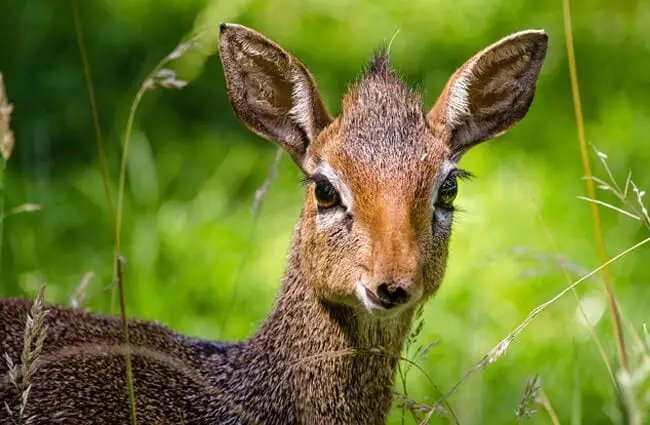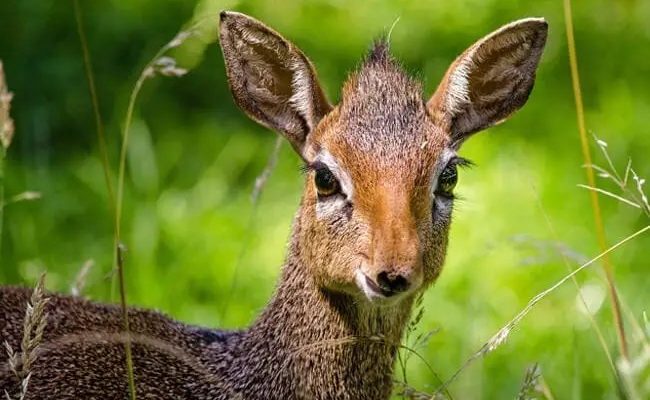
Dik-diks are often compared to delicate dancers, gracefully leaping through their environments. They’re primarily found in the dry, scrubby parts of East Africa, where their nimble bodies allow them to navigate dense vegetation. Picture a beautiful savannah filled with acacia trees and thorny bushes; that’s mostly where these creatures call home. So, let’s take a closer look at their habitats and understand what makes their homes special.
What Are Dik-Diks?
Let’s start with the basics. Dik-diks belong to the browser family of antelopes known as *Madoqua*. They’re named after their distinct alarm call, which sounds like “dik-dik.” Isn’t that cute? These little animals stand about 12 to 16 inches tall and weigh around 10 to 15 pounds. They’ve got a unique look with large, expressive eyes and long legs, which make them excellent at spotting predators.
You might think these animals are just a tiny speck in the vast African wilderness, but they play a significant role in their ecosystem. By feeding on leaves, fruits, and shoots, dik-diks help maintain the health of their habitat. They’re also a critical food source for larger predators, creating a balanced food web. So, even though they’re small, they’re mighty in their own right!
Geographical Distribution of Dik-Diks
Dik-diks are mostly found in the eastern and southern regions of Africa. Here’s what you should know:
- East Africa: Countries like Kenya, Tanzania, and Uganda boast diverse environments where dik-diks thrive.
- Southern Africa: You can also find them in parts of Zimbabwe and Namibia, where they enjoy a range of habitats.
These regions are characterized by savannahs, woodlands, and scrublands. Their preference for bushes and shrubs allows them to stay hidden from predators like leopards and hyenas. It’s all about survival, and they’ve got the right tricks up their sleeves!
Ideal Habitat Characteristics
Dik-diks have specific preferences for their habitats. Here’s what makes a perfect dik-dik home:
- Dense Vegetation: They prefer areas with plenty of bushes and shrubs. This greenery not only provides food but also cover from predators.
- Water Sources: While dik-diks can survive for long periods without water, they still need access to it. They prefer habitats near small water sources like streams or watering holes.
- Open Spaces: Although they need cover, having some open areas allows them to spot danger from afar.
This combination of features creates a safe and sustainable environment for dik-diks. Honestly, they’re pretty clever in picking where to live!
Behavior and Adaptations
Dik-diks have fascinating behaviors and adaptations that help them survive in their habitats. For instance, they are most active during the early morning and late afternoon. This timing helps them avoid the heat of midday when predators are also lurking about.
They’re also known for their monogamous pairs. These little lovebirds stay together and defend their territory from others. It’s sweet, right? They communicate through a series of vocalizations and also use scent marking to establish their presence.
Their agility is another advantage. With incredible speed and grace, dik-diks can make quick escapes from danger. Picture them darting between bushes and shrubs, their small size giving them a sneaky edge.
Threats to Dik-Dik Habitats
Sadly, the habitats dik-diks depend on are under threat. Here are some of the main issues they face:
- Habitat Loss: As human populations grow, more land is cleared for agriculture and development, squeezing their living space.
- Climate Change: Changes in weather patterns can disrupt their habitats, affecting food and water availability.
- Predation and Hunting: Natural predators are a threat, but humans also hunt dik-diks for bushmeat in some regions.
These threats impact not just dik-diks but the entire ecosystem. When their homes are compromised, it disrupts the balance of life they support.
Conservation Efforts
Understanding the challenges dik-diks face has led to various conservation efforts. Here’s how we can help:
- Protected Areas: Establishing reserves helps safeguard dik-dik habitats from development and encroachment.
- Education: Raising awareness about the importance of dik-diks and their role in the ecosystem encourages conservation.
- Community Involvement: Engaging local communities in conservation practices benefits both nature and people.
With these efforts, we can create a healthier environment for dik-diks and many other species that share their home.
So, where do dik-diks live? They thrive in the warm, bushy areas of East and Southern Africa, showcasing remarkable adaptations to their habitats. Understanding their living conditions, behaviors, and the challenges they face is vital for their survival.
By recognizing the beauty and importance of dik-diks, we can contribute to their conservation and help ensure these delightful creatures continue to leap through the African brush for generations to come. Let’s cherish and protect their homes!

